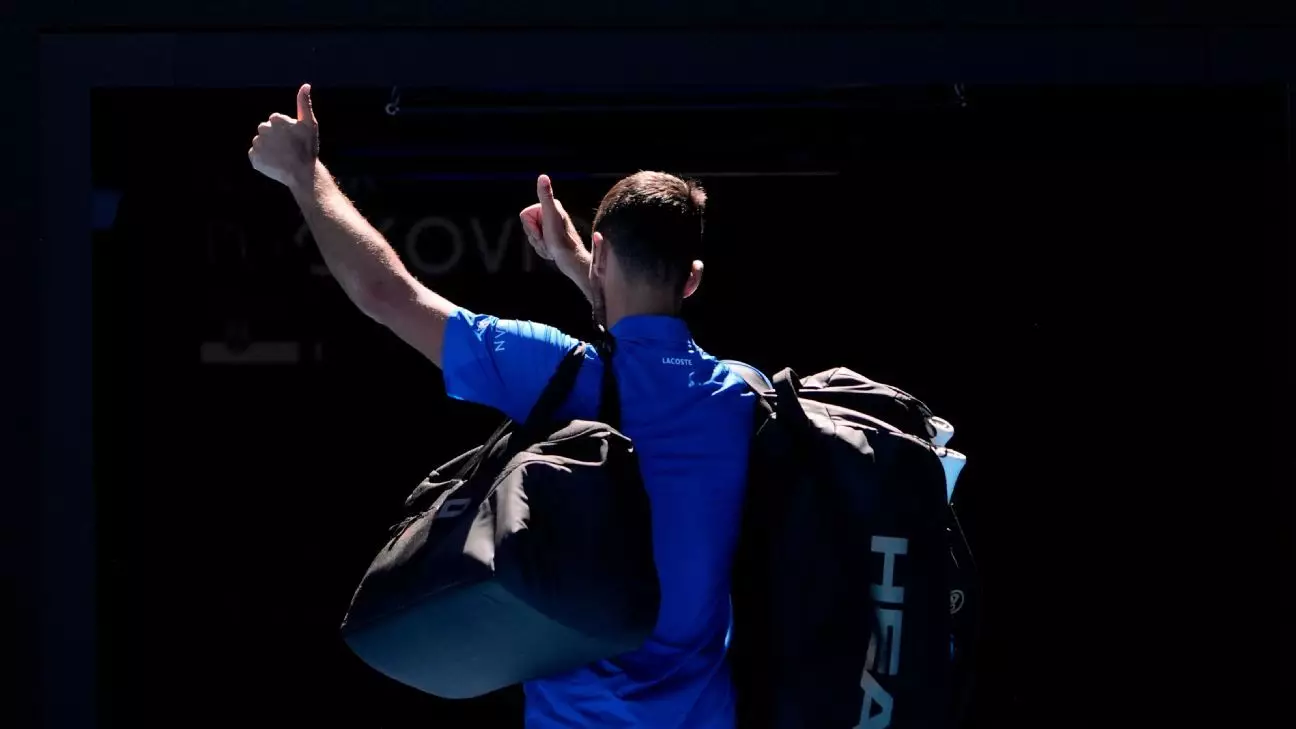The sports world was rocked when Novak Djokovic, a titan in men’s tennis with an extraordinary record of twenty-four Grand Slam titles, made a premature exit from the 2023 Australian Open semifinals against rising star Alexander Zverev. The match was a promising contest until Djokovic, visibly hampered by a muscle tear in his left leg, was forced to retire after the gripping first set, which Zverev clinched in a challenging tiebreaker that lasted 81 minutes. As Djokovic approached the net to acknowledge Zverev, the crowd’s reaction at Rod Laver Arena shifted from hopeful anticipation to disappointment, culminating in boos directed at the seven-time champion. Despite the negativity, Djokovic managed a two thumbs up in response, showcasing his unyielding spirit even in defeat.
Post-match, Djokovic expressed his frustration, revealing the uphill battle he faced against mounting pain. “I did everything I possibly can to manage the muscle tear,” he admitted, revealing the extensive measures he undertook to compete, including medication, strapping, and physiotherapy. However, as he continued to feel the effects of the injury, it became clear that the toll was too much to bear, especially given the physically demanding nature of the sport.
From the outside, it might appear that Djokovic’s exit symbolizes merely a painful moment in sport. However, for Djokovic, this represents a culmination of broader issues regarding injury management and the physical toll of high-level competition. His emphatic statement about the challenges posed by injury—”I knew even if I won the first set it was going to be a huge uphill battle”—highlights the immense pressure athletes face, particularly those competing at the elite level.
Zverev’s response to the crowd’s booing stands out as a significant moment of sportsmanship in the aftermath of what should have been a thrilling contest. In his on-court interview, Zverev beseeched fans to respect the efforts and struggles of players, arguing, “He has won this tournament with an abdominal tear, won this tournament with a hamstring injury. So please show some respect.” This call to action underlines a necessary discourse within professional sports; the reality of injuries and the sacrifices players make for their passion and commitments must be honored, rather than met with derision.
The backdrop to Djokovic’s recent injury is a series of challenges that have plagued him over the past few years. The Serbian star revealed that this latest setback is not an isolated incident but a trend, considering that he had faced similar issues at the French Open last year. His acknowledgment of this disheartening reality raises pertinent questions about recurrent injuries in athletes. “Statistics are against me,” he remarked, capturing the essence of a seasoned athlete grappling with the realities of sports in an age where physical fitness and mental fortitude are constantly tested.
The mental strain accompanying such physical challenges cannot be overstated. Greatness is often overlooked in the light of triumph, but the truth is that it is forged amid adversity. Djokovic’s living proof that, despite overwhelming situations, his zeal for the sport remains undeterred. “I’ll keep striving to win more Slams,” he affirmed, embodying the resilience characteristic of champions.
Looking ahead, Djokovic plans to prioritize his health, intending to collaborate with his medical team after returning to Europe. He hopes to understand more about his injury and how best to recover—a sensible plan for an athlete facing career-threatening challenges. His intention to possibly compete in the upcoming Doha tournament will depend on the speed of his recovery.
In a sport where fortunes can shift abruptly—often due to factors outside an athlete’s control—Djokovic stands as a testament to perseverance. Though setbacks may momentarily dim his brilliance, his innate passion and rigorous dedication ensure that this setback may merely be a stepping stone toward future greatness. As fans await his return, the legacy of Djokovic continues to be one of resilience, adeptly highlighting the highs and lows of a formidable sporting life.


Leave a Reply